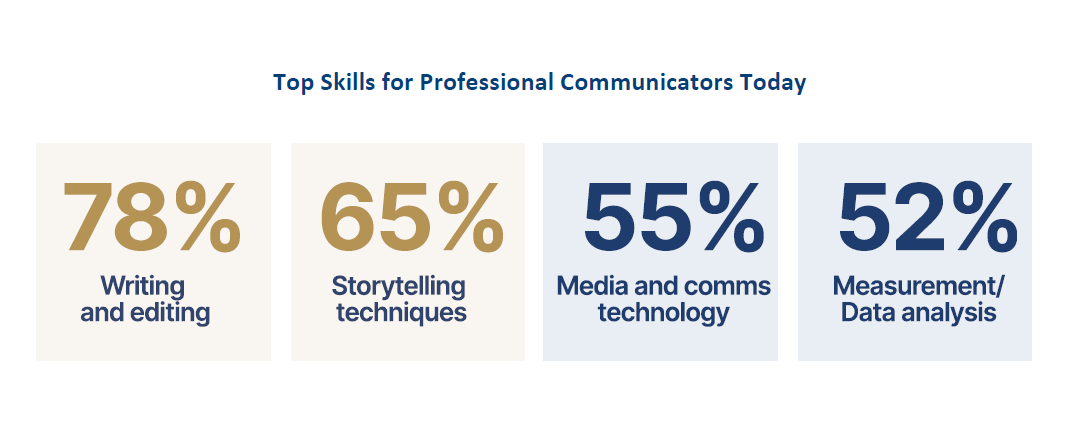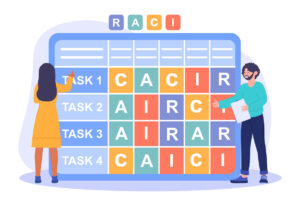Roundtable Recap: The skills required of comms, guarding against internal risk and more
During a recent roundtable in Chicago, Communications Leadership Council members and select invitees discussed the skills communicators need to be strategists and guardians of the brand.

Communications professionals find themselves at the center of some of the critical issues facing their organizations today.
With that in mind, Ragan Chief Growth Officer and Head of Councils Mary Buhay led a roundtable discussion with members of Ragan’s Communications Leadership Council, select invitees and a representative from the intranet, communications and employee advocacy platform Haiilo. The hour-long conversation covered several topics, including a discussion around several key findings from the council’s recently released Communications Benchmark Report, before expanding into the risks around integrating AI and how internal communicators become the guardians of brand risk and reputation.
Contributor insights are unattributed to protect each participant’s anonymity. Here’s what stuck out.
The skills required of communicators today
Buhay began by sharing results of Ragan’s Communications Benchmark Report, which found that writing and editing are paramount when it comes to the essential skills for communicators today. Participants agreed and cited storytelling as a key skill, too— with the latter framed as more strategic because it takes into account the narrative arc that takes an audience on a trip based on what’s important for them to know.
Another attendee cited measurement and data as another mandatory skill, with a specific focus on refining, iterating and improving how that data is sourced and analyzed.

“Who are we competing with for a share of attention?” Buhay asked the table. “Everyone,” joked an attendee. “Mr. Beast,” joked another, citing the YouTube influencer who is ubiquitous among certain demographics.
A third attendee emphasized how honing measurement chops gets executive buy-in by demonstrating continual improvement and helping comms showcase what’s impactful. “What’s generating the messaging you need and they need,” they said.
This focus ultimately creates a level of accountability that shows your value as a communicator, ensuring that the message has the desired impact and the right reach.
“It elevates the communicator to ensure the intended outcomes are being met and that you’re actually a consultative strategic partner versus just an executioner,” an attendee added.
How comms can ascend to the C-suite
At another point in the conversation, Buhay reminded the roundtable that even an external comms focus starts with internal strategy, as delivering on the promise of deliverables ultimately started from within. She positioned this point as a frame for thinking about how communications leaders can eventually join the C-suite, and asked attendees if they could name a CCO who ascended to the CEO role.
After no one was able to, Buhay cited David D’Alesandro, the former comms executive at John Hancock who went on to become CEO, as a rare example of this career path.When asked why this path isn’t more common, one attendee said that comms is not often a carved-out function precisely because it crosses so many departments.
“There’s this cross-section of managing human capital and having a seat at the table to understand what’s happening in the business,” said another, stressing that strategy, partnership and reputational management is something comms does for the external brand—but for leaders, too.
“I’m the protector of the employees that they lead, and the protector of them. Because they don’t necessarily show up and storytell the way that they should, and on the technology side they’re archaic.”
Talking AI
As the need for communicators to bridge that technological knowledge gap to leadership became clearer, the conversation transitioned into talk of AI and a consensus was reached that the lack of a regulatory landscape keeps communicators up at night.
“Once you put something into a language learning model you can’t get it back,” said one attendee.
While custom GPTs are a great way to keep that from happening, they are incredibly expensive and resource-draining.It takes time on the front-end to train a custom tool and refine it to work with your brand voice.
Participants cited the trust and buy-in that comms can influence as a key motivator for embracing AI, however, with one attendee sharing how comms supported the IT team by hammering out a policy process in advance of the tool launching and then launched an education campaign to get employees onboard.
It’s the responsibility of the communications function to put such programs and frameworks in place, said another, and comms has the ability to shape a strong internal governance that can ultimately protect the external brand. Several participants played an outsized role in forming an internal council, for example.
“This coalition is a holy trinity between comms, HR and legal,” explained one attendee, while another said their council framed its embrace of AI as a driver of operations to great success, saying that “we saw how it can help our associates do their jobs faster, better.”
A triumph of strategic communications
After another participant emphasized the importance of communications getting involved in training AI models, the conversation evolved to discuss the elements of effective strategic communications. Buhay emphasized how maintaining a level of business fluency is table stakes.“Business fluency cuts across a whole range of specializations,” she said. “We see your value in providing that strategy and building that relationship, but it takes a lot more for the business to see that value.”
“This is why business fluency is important,” said one attendee. “It directly impacts your credibility,” said another.
Having that cross-departmental awareness and deploying it with a communicator’s level of emotional intelligence also improves the ability of comms to practice effective change management.
“There’s a lot of times when we’re asked to share something that’s not super fun, that’s not what people want to hear,” said one participant “Sharing the message so it gets across and doesn’t create extra upheaval is important.”
Another attendee agreed, adding that this is best accomplished with consideration for what’s going on outside of work, too.
“You have to think about what else is going on in the world or the organization, too,” they said. “You don’t want to send out some happy-go-lucky communication when the same message is getting announced next week. You really have to have that vista across all the communications functions.”
“They like it when you use their words back at them,” added another. “Whenever you can tie goal and metrics to the words they cling to that helps. When we can tie our successes to theirs.”
But it’s not as simple as reflecting employees’ words back at them. The way that you’re communicating to people, relative to who you’re communicating to, makes a difference—and gives you an opportunity to match your level of business fluency to theirs.
Validating internal as a guardian of risk
Following a robust discussion about strategic comms, the conversation transitioned to how this cross-functional oversight can mitigate risk and protect corporate reputation
One participant noted this challenge when they saw employee resistance to vaccination requirements, which was surprising given that they worked in healthcare. In response, leaders asked to shut down two-way dialogue channels, but the communicator pushed back and positioned their decision to keep the channels open as a matter of psychological safety.
“It’s the appetite to actually listen to what the next generation wants to see,” surmised another attendee after hearing this. “We talk a lot about bringing your full self to work. If we talk about that we have to actually allow it to happen.”
“Informed employees are engaged employees,” said a third participant, explaining that making employees feel informed also helps them feel connected. When there’s an opportunity for comms to fill in the gap, “it helps us have that conversation.”
As Buhay brought the discussion back to comms’ role in building trust, attendees talked about how they consider what issues to engage with and respond to. There’s a balance to be respected between coming loaded with a decision-making framework and applying judgement to move the matter further down the decision-making tree.
Ultimately, as one participant put it, all communicators are striving for that balance:“Equity in communications, equity in principle.”
The full 66-page report discussed, based on a survey of 1,000 communicators worldwide, is available exclusively to members of the Ragan Communications Leadership Council.







